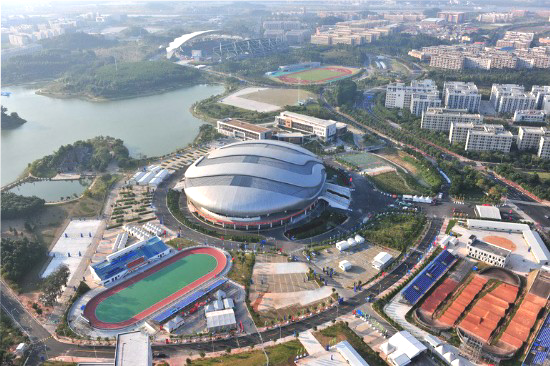Networking Architecture of 5G NR at 3.5GHz
As the first release of 5G standard is approaching, leading operators worldwide are making preparations for their initial 5G launch. Since 3.5GHz band (3.3GHz-3.8GHz) will be the dominant mid-band choice for these early 5G deployments, its coverage capability will have a big influence on operator’s 5G strategy choice. Some operators prefer NSA (Non Standalone) as they believe that 3.5GHz NR is incapable to provide continuous coverage. To fully understand the coverage performance of 3.5GHz NR, ZTE has put tremendous efforts, together with its partners, on the research of this topic, from both theoretical analysis to field trials. Based on these results, ZTE is confident to announce, that 3.5GHz NR can provide similar coverage compared with FDD LTE 1.8GHz, and is capable to support either Standalone (SA) or Non-Standalone (NSA) deployment mode per operator request.
A common point of view of 3.5GHz NR is that as 3.5GHz will suffer higher propagation loss than typical low band LTE such as FDD 1.8GHz or TDD 1.9GHz, 3.5GHz NR coverage will shrink compared with these 4G bands. But since 5G NR is a totally new air interface, it has introduced a lot of advanced technologies which will compensate most of this additional loss. These technologies include: enhancements in terminal side (dual transmitter and higher output power); massive MIMO technology; and larger carrier bandwidth. A detailed link budge calculation has been made for 3.5GHz NR and several typical 4G scenarios. If 2Mbps edge data rate has been adopted, radius of 3.5GHz NR can reach 262m under 16 antennas (40% UL ratio), or 247m under 64 antennas (20% UL), while FDD 1.8G(2R) has radius of 251m, and TDD 1.9G(8R) has 213m; If 1Mbps edge data rate adopted, radius of 3.5GHz NR can reach 313m under 16 antennas (40% UL ratio), or 295m under 64 antennas (20% UL), while FDD 1.8G(2R) has radius of 300m, and TDD 1.9G(8R) has 265m; All these results show that, whatever edge data rate adopted, 3.5G NR has similar radius compared with FDD 1.8G(2R)

Figure 1 5G NR field trial location – Guangzhou University Town
To better understand the NR coverage performance in real environments, ZTE has partnered with China Mobile conducting a series of verification in Guangzhou 5G field trial. This trial is one of the world’s largest 5G NR field trials jointly setup by China Mobile and ZTE. In Jun.2017, we built world’s 1st 3.5GHz field site; In Oct, 5G NR continuous coverage composed of multiple sites has been completed. In this test bed both parties have designed man test items to verify the 3.5GHz NR coverage performance, including indoor coverage by outdoor macro site, single site coverage, and continuous coverage performance evaluation. All these test results show, that 3.5GHz NR can provide better coverage compared with China Mobile existing 4G network.
To summarize, ZTE think 3.5GHz NR is capable to provide continuous coverage, both theoretical analysis and field trial has approved that 3.5GHz 5G NR can provide comparable coverage with today mainstream 4G bands. For operators owning 3.5GHz band, technically both SA and NSA are viable options, operators should choose the deployment option which best meet their 5G strategy.


